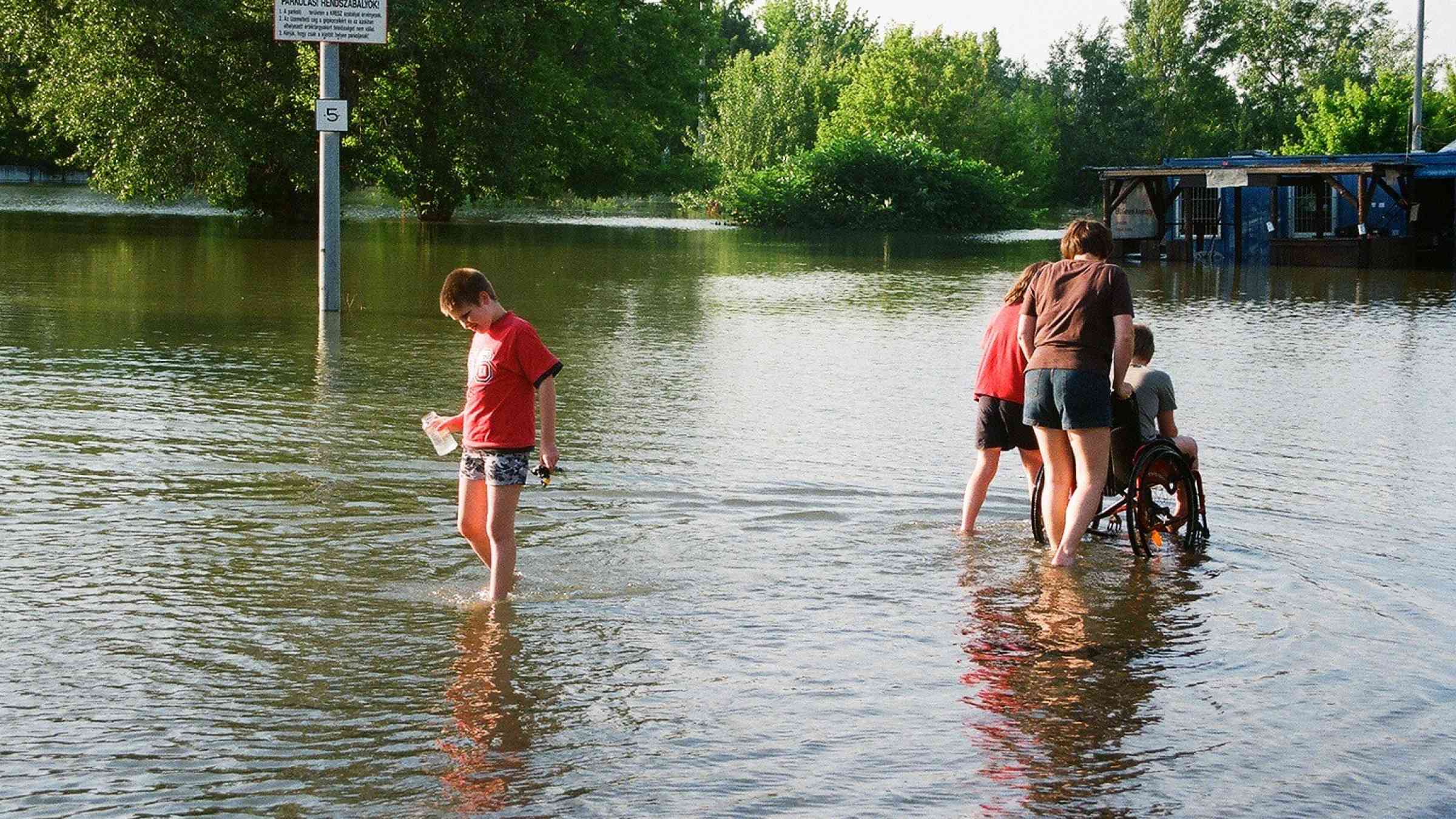Homeless and looking for help – why people with disability and their carers fare worse after floods

Thousands of people have been displaced from the floods in New South Wales and Queensland. Across the Northern Rivers, the floods have damaged at least 5,500 homes, with at least half of these expected to be uninhabitable.
Floods expose social inequities and exacerbate the housing crisis for people with disability and carers in the region.
In 2020, the disability royal commission raised concern that people with disability were more at risk of homelessness during emergencies.
This followed our research after the 2017 Northern Rivers floods, which showed people with disability and carers were more likely than others to have their homes flooded, to be evacuated and still displaced from their homes six months after the flood.
We found people with disability and carers were at greater risk of post-traumatic stress disorder (PTSD).
Why the greater impact?
People with disability are disproportionately impacted by flooding because of socioeconomic disparities.
Floods intersect with social, cultural and economic factors to shape people’s exposure to risk and their ability to prepare for, respond to, and recover from flooding events.
In Lismore, for example, 82% of people living in the 2017 flooded area were in the lowest socioeconomic group.
Housing in flood-prone areas is generally cheaper to buy and to rent, which means people with the least resources – including those with disability and carers – are more likely to be living in areas prone to flooding.
As one person told us:
– Person with disability
Stories from the ground
Due to socioeconomic disparities, people with a disability or carers affected by flooding have greater need for emergency housing in the short term and more secure housing in the long term.
In many cases, people affected by this flooding event will have experienced other climate-related traumas. It was only five years ago the Northern Rivers experienced its last major flood event and just over two years since bushfires devastated the region.
Following a disaster, people with disability must navigate two complex and often inaccessible bureaucracies: the emergency response and recovery arrangements, and disability services, which which are likely to be compromised by the same disaster.
In the 2017 flood, people felt left behind. As one person explained to us:
– Person with disability
The lack of affordable and accessible accommodation resulted in people with disability and carers returning to, or moving into, unsafe accommodation. Floods can affect the integrity of buildings: they are more likely to leak, develop mould, and suffer from draughts.
Our research highlighted the lack of affordable accommodation for displaced people with disability, a situation exacerbated by many temporary accommodation and homeless services being flooded.
– Person with disability
Some become homeless.
– Carer
Climate change means there will be more frequent and severe disasters. The Northern Rivers will flood again.
The right to safety and well-being in emergencies is now built into Australia’s Disability Strategy 2021-31. It includes, for the first time, targeted action on disability inclusive emergency planning. This must include safe and accessible housing.
Improving housing outcomes for people with disability affected by flooding requires the removal of pre-existing barriers that increase inequitable access to safe living situations. This should happen during pre-planning, and we have direction with the new disability strategy.
6 steps to minimise the housing crisis when disasters strike
But we’re in the middle of an unfolding flood disaster now. So here are six steps governments could take now to minimise the housing crisis for people with disability and carers:
- provide accessible short-term emergency housing and support access to secure, safe and accessible long-term housing options
- relocate displaced people with their family, carers and support networks to ensure continuity of support from the people they rely on for personal, practical, and emotional support
- partner with people, their representative, and advocacy organisations to identify, understand, and respond effectively to disaster-related housing vulnerabilities
- include local housing and homelessness services in human and social recovery planning now and for long-term recovery
- resource disabled people’s organisations to enable person-centred emergency preparedness (P-CEP) tailored to people’s local flood risk, living situation, and other support needs to increase choice and control during recovery
- support social housing and homelessness services to develop effective emergency plans for how they will sustain services and continuity of supports during and after disasters.
![]()